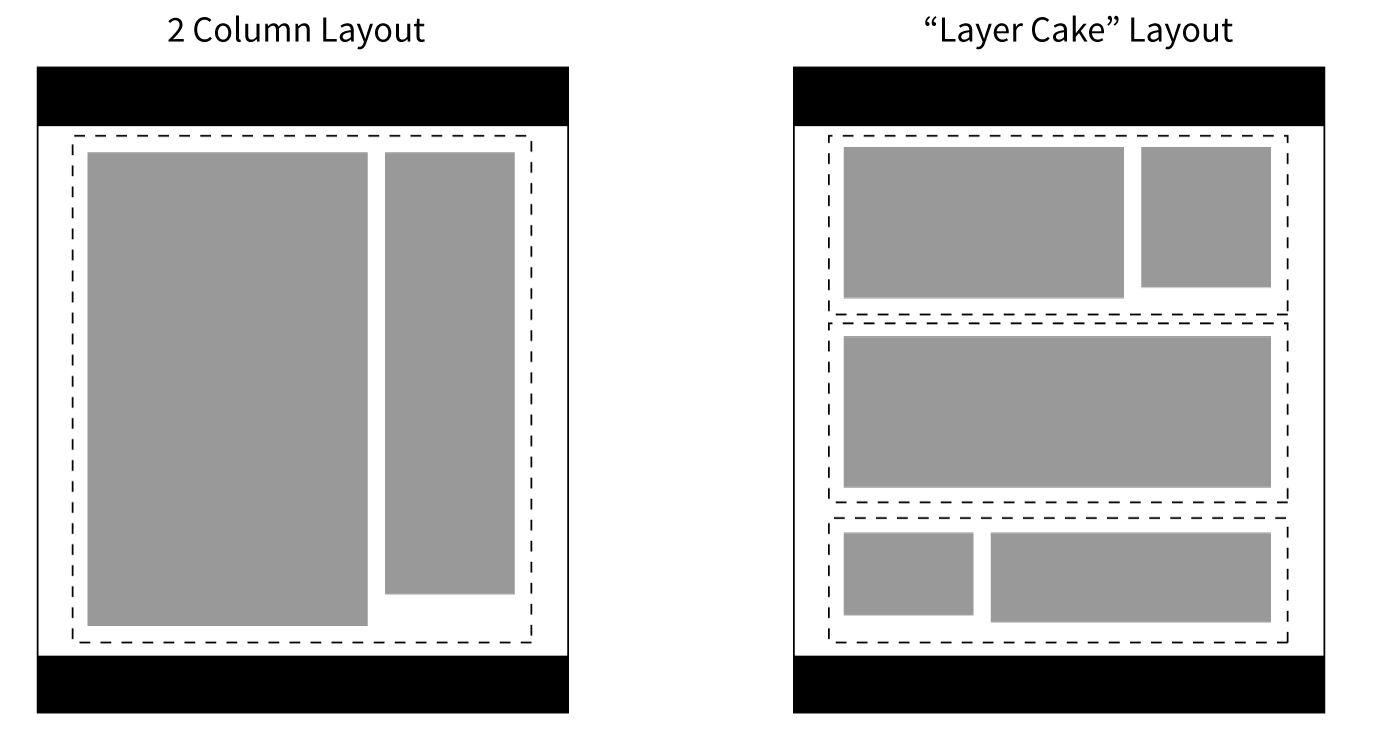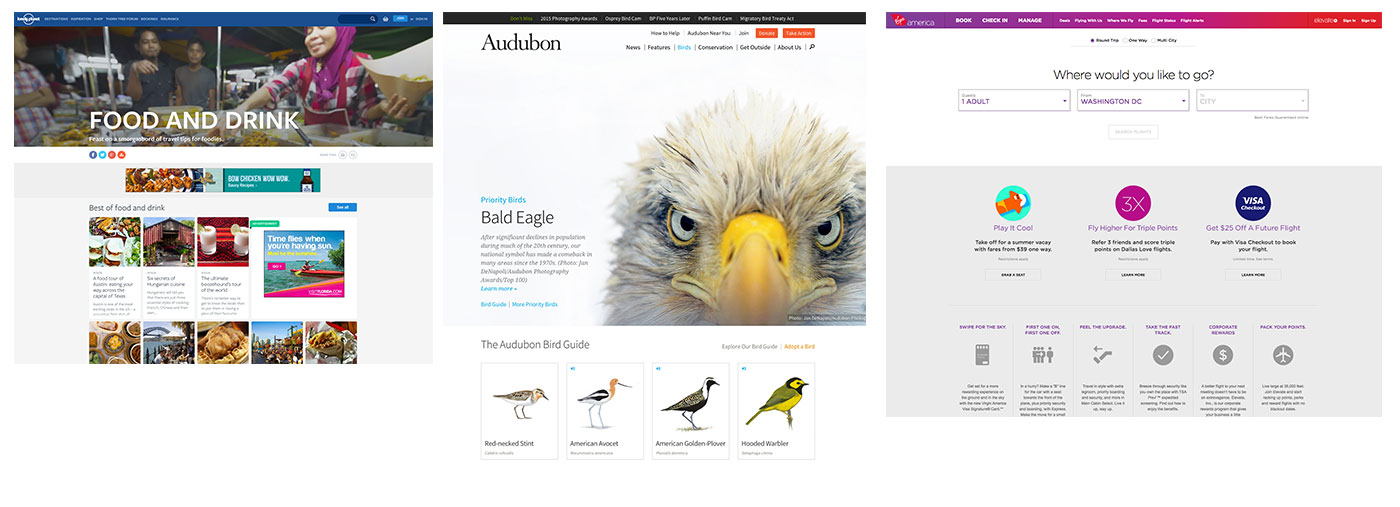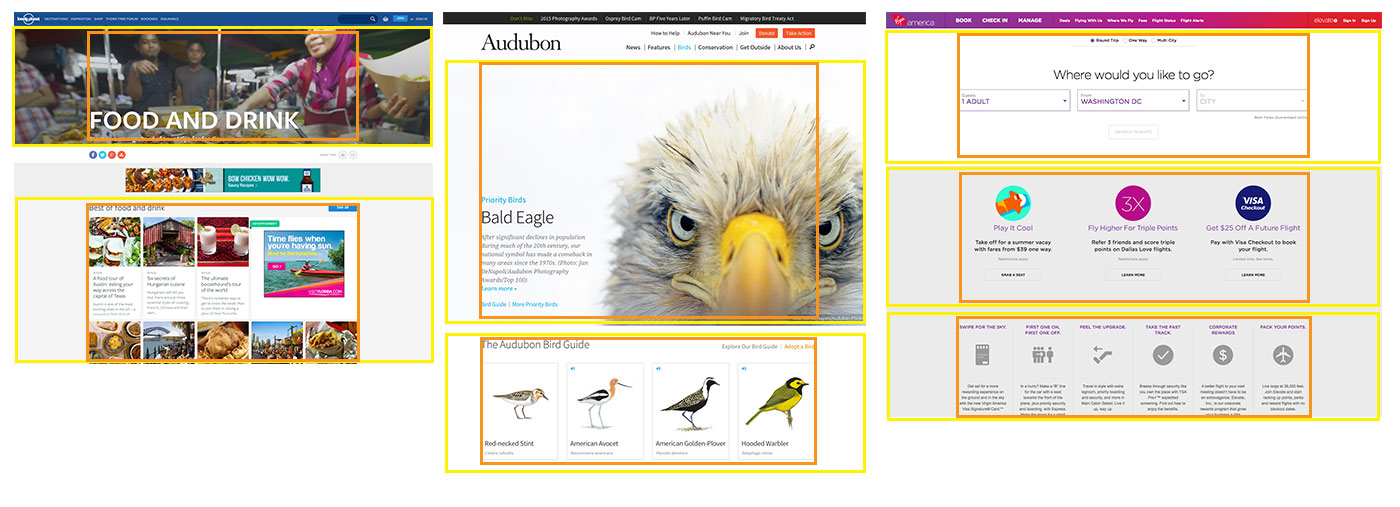Layer Cake: A Responsive Design Layout Pattern
There is a design pattern that I've noticed emerge on a lot of the responsive projects that I've worked on in the last few years. They have all tended to gravitate towards a particular kind of layout. There are a lot of situations where this pattern is helpful, so I wanted to write a bit about it.
I call it "The Layer Cake" - it's a way to approach page layout in a responsive design. You can also call it 'tiered' layout - but, mmmmm - cake. This differs from a regular 'multi column' layout in that there is no all-encompassing container, or long running sidebars. There can be multiple columns within a layer, though.

Here is what it looks like in the real world:

The layout consists of independent layers that are stacked on top of each other to form the page. A consistent layout is achieved by the use of "inner" containers - even if not visible without viewing the code. Here are the above examples again, but with the layers outlined in yellow, and the inner containers in orange:

If you're thinking about things in terms of code, instead of this kind of source order:
<body>
<div class="container">
<div class="column-1">
<!-- column content -->
</div>
<div class="column-2">
<!-- column content -->
</div>
</div> <!-- end container -->
</body>You will end up with markup more like this:
<body>
<div class="layer">
<div class="layer__inner">
<!-- layer content -->
</div>
</div> <!-- end layer -->
<div class="layer">
<div class="layer__inner">
<!-- layer content -->
</div>
</div> <!-- end layer -->
<div class="layer">
<div class="layer__inner">
<!-- layer content -->
</div>
</div> <!-- end layer -->
</body>This approach has several strengths, especially in a responsive design:
- The layers can all be swapped out, moved around, etc - easily. This makes for a layout that is easy to implement as part of a whole design system.
- Content source order must be considered carefully, as it enforces hierarchy.
- By avoiding sidebars, you can side step awkward content order problems that arise from a more traditional 2 or 3 column layout.
- It works really well when there are many pieces of varied content being presented - e.g. home pages, category pages
- Long form content will probably end up with large swaths of negative space next to it. I personally think this is a strength that aids in the readability of content, but this could be perceived as a drawback.
Potential drawbacks do exist:
- They tend to end up forming long pages with a lot of scrolling. I personally don't mind this - I think users are by and large comfortable with scrolling.
- "Related" content pieces are harder to present 'right next to' a main piece of content.
- Maintaining a consistent layout involves a bit more planning and manual adjustment.
Previous: Creativity is yet to come in Web Design

